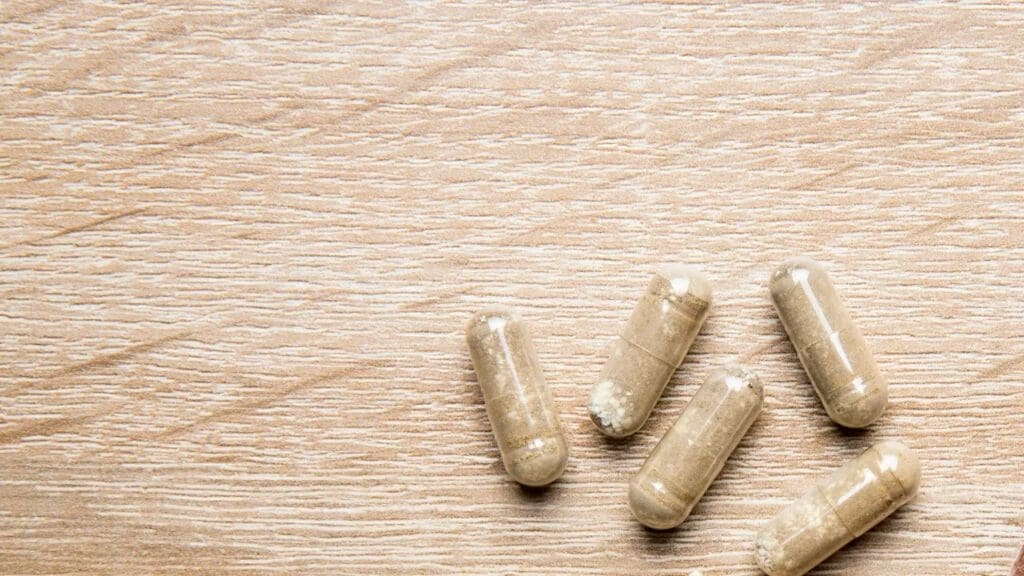In Europe, North Africa, and Western Asia, woodbine (Lonicera periclymenum), also known as European honeysuckle, is a climbing deciduous plant. It is a member of the Caprifoliaceae family and is distinguished by its fragrant, tubular flowers, which come in a range of colors from white to yellow to pinkish-purple. Woodbine’s anti-inflammatory, antibacterial, and antioxidant qualities have been employed in traditional medicine. This article’s goal is to examine the properties of Woodbine, as well as its health advantages, recommended dosage, adverse effects, probable drug interactions, and safe use. We’ll also go over the chemistry of Woodbine and the physiological processes that underlie how it affects the body and the brain.
You May Also Like:
Nordic Naturals Omega-3 Phospholipids: Evaluation of a Leading Brain Health Product
Coral: Benefits, Dosage, Side Effects, Drug Interactions, and Other Important Information
Woodbine: Benefits, Dosage, Side Effects, Drug Interactions, and Other Important Information is an original (NootropicsPlanet) article.
The Nature of Woodbine
Numerous phytochemicals found in woodbine support its pharmacological effects. These include triterpenoid saponins, iridoids, and flavonoids. The complex class of polyphenolic chemicals known as flavonoids has anti-inflammatory, anti-cancer, and antioxidant effects. Iridoids are a subclass of monoterpenoids that have hepatoprotective, anti-oxidative, and anti-inflammatory properties. A class of organic substances called triterpenoid saponins is well-known for having anti-inflammatory, immunomodulatory, and anti-cancer effects.
Health Benefits of Woodbine
a) Anti-inflammatory Effects
Due to the presence of flavonoids, iridoids, and triterpenoid saponins, woodbine has anti-inflammatory qualities. These substances alter the immune system and block cytokines that promote inflammation, which lowers inflammation. This may help in the treatment of multiple inflammatory illnesses, including inflammatory bowel diseases, asthma, and arthritis.
b) Antioxidant Function
The presence of flavonoids in woodbine is principally responsible for its antioxidant properties. These substances counteract free radicals, and unstable chemicals that can lead to oxidative stress, harm cells, and accelerate aging and various diseases. Woodbine aids shield cells against oxidative stress by scavenging free radicals, potentially lowering the risk of chronic illnesses like cardiovascular disease, neurological diseases, and some malignancies.
c) Microbiological Activity
Woodbine demonstrates antibacterial action. Its triterpenoid saponins and flavonoids damage pathogens’ cell membranes, obstruct their growth, and stop the development of biofilms. This antimicrobial activity may help treat infections, especially those brought on by bacteria that are resistant to antibiotics.
d) Neuroprotective Effects
Woodbine has been demonstrated to have neuroprotective effects, perhaps as a result of its anti-inflammatory and antioxidant qualities. Woodbine may shield neurons from harm by lowering oxidative stress and inflammation in the brain, thereby slowing the progression of neurodegenerative illnesses like Alzheimer’s and Parkinson’s disease.

Chemistry of Woodbine
The presence of flavonoids, iridoids, and triterpenoid saponins dominates the chemistry of Woodbine. These phytochemicals have a vital role in the plant’s medicinal effects.
a) Flavonoids: Flavonoids are polyphenolic chemicals having two aromatic rings connected by a three-carbon bridge as their common chemical structure. Depending on the structural differences, they are further split into a number of subclasses, including flavonols, flavones, isoflavones, flavanones, anthocyanidins, and flavonols.
b) Iridoids: Iridoids are monoterpenoids with a skeleton made up of a 10-carbon isoprenoid. They typically take the form of glycosides, which are attached to sugar molecules. Iridoids are compounds with cyclopentanopyran rings that are categorized as iridoid glycosides and aglycones depending on whether or not a sugar component is present.
c) Triterpenoid saponins: This class of natural compounds is distinguished by the presence of a triterpenoid aglycone (sapogenin) connected to one or more sugar moieties. The amphiphilic nature of these substances—they have both hydrophilic and hydrophobic qualities—contributes to their biological activities, including their capacity to form micelles and engage with cell membranes.
Physiological Mechanism of Action of Woodbine
The phytochemical components of Woodbine, notably flavonoids, iridoids, and triterpenoid saponins, are responsible for the physiological mechanisms underpinning the drug’s effects on the body and brain.
a) Anti-inflammatory Mechanism: Woodbine’s flavonoids, iridoids, and triterpenoid saponins may prevent nuclear factor-kappa B (NF-B), a transcription factor involved in the control of genes producing pro-inflammatory mediators, from becoming activated. Hence, this contributes to the anti-inflammatory effects that are shown by Woodbine.
b) Antioxidant Mechanism: Woodbine’s flavonoids demonstrate antioxidant activity by chelating metal ions involved in oxidative processes and scavenging free radicals. These substances have the ability to either directly neutralize free radicals or increase the activity of naturally occurring antioxidant enzymes such as glutathione peroxidase (GPx), catalase, and superoxide dismutase (SOD).
c) Antibacterial Mechanism: Triterpenoid saponins and flavonoids interact with pathogen cell membranes, rupturing them, and allowing cellular contents to seep out which adds to their antimicrobial qualities.
d) Neuroprotective Mechanism: Woodbine’s antioxidant and anti-inflammatory properties may be responsible for its neuroprotective effects. Woodbine’s flavonoids, iridoids, and triterpenoid saponins have the ability to slow the progression of neurodegenerative disorders by lowering oxidative stress and inflammation in the brain.

Optimal Dosage of Woodbine
The best dosage of Woodbine will depend on the user’s age, weight, and overall health as well as the supplement’s particular preparation and type. To get the right dosage for your unique needs before using Woodbine, it is essential to speak with a healthcare provider.
Side Effects of Woodbine
When used as prescribed and in moderation, woodbine is generally regarded as safe. However, some people may encounter side effects like gastrointestinal discomfort, allergic reactions, or skin irritation. If any negative effects appear, it is crucial to stop using it immediately and seek medical advice.
Potential Substance Interactions with Woodbine
Certain medications or dietary supplements may interact with woodbine, potentially changing their efficacy or raising the possibility of negative side effects. For instance, Woodbine may interact with nonsteroidal anti-inflammatory drugs (NSAIDs), corticosteroids, or other anti-inflammatory pharmaceuticals because of its anti-inflammatory effects. Additionally, the antioxidant properties of woodbine may counteract the effects of radiation or chemotherapy. If you are on any drugs or dietary supplements, you must speak with a healthcare provider before using Woodbine.

Best Responsible Uses of Woodbine
Follow these recommendations to make sure Woodbine is used responsibly:
a) Before using Woodbine, talk to a doctor, especially if you are taking any medications, have a medical condition, are pregnant, or are nursing a baby.
b) Use Woodbine supplements that have undergone independent scientific testing for efficacy and purity.
c) Adhere to the dose recommendations and do not take more than is advised.
d) Keep an eye out for any side effects or negative reactions and stop using the product immediately.
Woodbine:
Conclusion
Woodbine is a climbing deciduous plant and it is often used in cooking as a salad or brewing tea. There are various species of them and Woodbine is a common name for European honeysuckle. In short, this plant contains anti-inflammatory and antioxidant effects. It can help the body to rid of free radicals and reduce oxidative stress.
Aside from that, it is also believed to deliver neuroprotective and anti-microbial effects. These health-benefiting effects are all contributed by the presence of flavonoids, iridoid, and triterpenoid saponins found in woodbine. Be sure to source this supplement from respectable sellers to ensure the purity of the supplement. Side effects are uncommon but they might cause some gastrointestinal discomfort or allergic reactions in some people. Hence, it is pivotal for you to be alert when taking this supplement.

References:
- Medicinal Plants from North and Central America and The Caribbean Considered Toxic for Humans: The Other Side of the Coin. Retrieved from:https://www.ncbi.nlm.nih.gov/pmc/articles/PMC5688365/
- Honeysuckle Extract (Lonicera Pallasii L.) Exerts Antioxidant Properties and Extends the Lifespan and Healthspan of Drosophila Melanogaster. Retrieved from:https://pubmed.ncbi.nlm.nih.gov/35122571/
- Health Properties and Composition of Honeysuckle Berry Lonicera Caerulea L. An Update on Recent Studies. Retrieved from:https://www.ncbi.nlm.nih.gov/pmc/articles/PMC7037556/
Important Note: The information contained in this article is for general informational purposes only, and should not be construed as health or medical advice, nor is it intended to diagnose, prevent, treat, or cure any disease or health condition. Before embarking on any diet, fitness regimen, or program of nutritional supplementation, it is advisable to consult your healthcare professional in order to determine its safety and probable efficacy in terms of your individual state of health.
Regarding Nutritional Supplements Or Other Non-Prescription Health Products: If any nutritional supplements or other non-prescription health products are mentioned in the foregoing article, any claims or statements made about them have not been evaluated by the U.S. Food and Drug Administration, and such nutritional supplements or other health products are not intended to diagnose, treat, cure, or prevent any disease.


